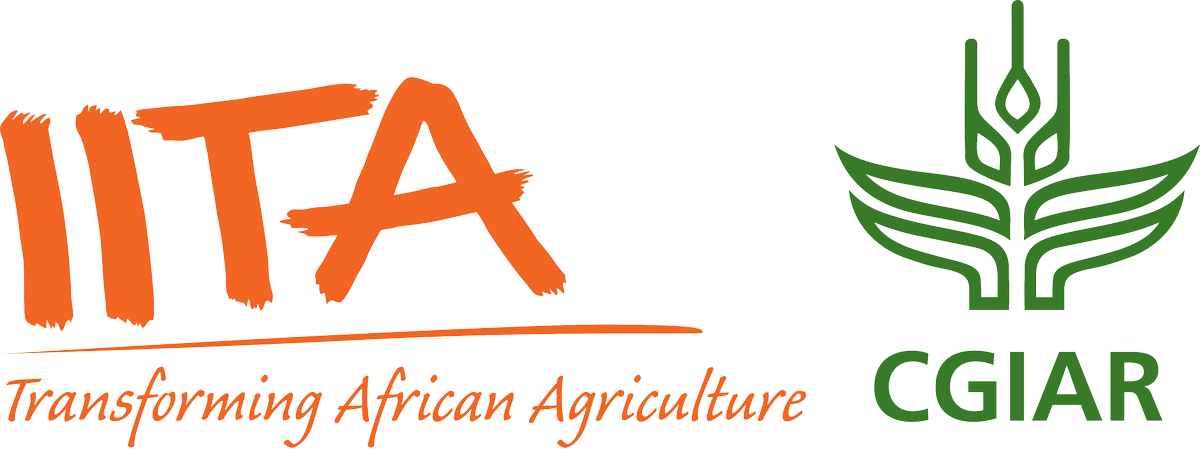| dc.contributor.author | Kaptoge, L. |
| dc.contributor.author | Ortega-Beltran, A. |
| dc.contributor.author | Atehnkeng, J. |
| dc.contributor.author | Konlambigue, M. |
| dc.contributor.author | Kamau, J.W. |
| dc.contributor.author | Bandyopadhyay, R. |
| dc.date.accessioned | 2025-01-20T10:43:41Z |
| dc.date.available | 2025-01-20T10:43:41Z |
| dc.date.issued | 2024-12-06 |
| dc.identifier.citation | Kaptoge, L., Ortega-Beltran, A., Atehnkeng, J., Konlambigue, M., Kamau, J.W. & Bandyopadhyay, R. (2024). The challenge of industrialization of a nature-based solution that allows farmers to produce aflatoxin-safe crops in various African countries. Frontiers in Sustainable Food Systems, 8: 1509384, 1-17. |
| dc.identifier.issn | 2571-581X |
| dc.identifier.uri | https://hdl.handle.net/20.500.12478/8665 |
| dc.description.abstract | In sub-Saharan Africa (SSA), many crops are contaminated by Aspergillus section Flavi fungi with highly toxic, carcinogenic aflatoxins. This contamination has severe negative impacts on health, trade, income, and development sectors, hindering progress toward various objectives of most Sustainable Development Goals (SDGs), including SDG 2 – Zero Hunger and SDG 3 – Good Health and Wellbeing. Farmers, industries, and governments need sound aflatoxin management strategies to effectively limit aflatoxin contamination throughout the crop value chain. One
effective technology is biocontrol using native atoxigenic isolates of A. flavus coated on a carrier that is applied on growing crops. Atoxigenic A. flavus competitively displaces aflatoxin producers in the field, and this form of bioprotection results in reduced aflatoxin in crops. Over 15 years ago, field tests in Nigeria using a manually manufactured biocontrol product showed promising results. However, it became evident that scaling up the manufacturing process was essential to make this bioprotectant widely accessible to millions of farmers and achieve tangible impact in the context of sustainable food systems. The objective of this paper is to document the evolution of biocontrol manufacturing from small-scale, lab-based production to industrial manufacturing at different scales. The improvements in product formulation, and manufacturing processes and design are highlighted to better address “fit-to-scale” product demand in different countries. Industrializing the manufacturing process coupled with incentivization, commercialization
strategies, and effective partnerships has allowed the manufacturing of thousands of tons of biocontrol products. This has enabled production of over a million tons of aflatoxin-safe maize, groundnut, and sorghum, contributing to enhanced food safety and security in several countries in SSA. The key lesson learnt is that for any input-based technology to mitigate aflatoxin (or any food safety issue), their large-scale manufacturing and commercialization is crucial for achieving
tangible results. Only widespread adoption of any technology can address the great challenge posed by aflatoxins, a critical step toward meeting several SDGs. The urgency to combat aflatoxin contamination is increasing as its impacts are intensifying in several regions across the globe. |
| dc.description.sponsorship | Bill & Melinda Gates Foundation |
| dc.description.sponsorship | United States Agency for International Development |
| dc.description.sponsorship | Partnership for Aflatoxin Control in Africa |
| dc.description.sponsorship | United States Department of Agriculture |
| dc.description.sponsorship | Federal Ministry for Economic Cooperation and Development, Germany |
| dc.description.sponsorship | Australia’s Department of Foreign Affairs and Trade |
| dc.description.sponsorship | Department for International Development of the United Kingdom |
| dc.description.sponsorship | Global Affairs Canada |
| dc.description.sponsorship | European Union Commission |
| dc.description.sponsorship | Austrian Development Cooperation |
| dc.description.sponsorship | Commercial Agriculture Development Program of the Government of Nigeria |
| dc.description.sponsorship | Government of DR Congo |
| dc.description.sponsorship | French Development Agency |
| dc.description.sponsorship | Royal Government of Norway |
| dc.format.extent | 1-17 |
| dc.language.iso | en |
| dc.subject | Aflatoxins |
| dc.subject | Biological Control |
| dc.subject | Food Safety |
| dc.subject | Food Security |
| dc.subject | Scaling Up |
| dc.title | The challenge of industrialization of a nature-based solution that allows farmers to produce aflatoxin-safe crops in various African countries |
| dc.type | Journal Article |
| cg.contributor.crp | Agriculture for Nutrition and Health |
| cg.contributor.crp | Maize |
| cg.contributor.affiliation | International Institute of Tropical Agriculture |
| cg.coverage.region | Africa |
| cg.coverage.region | Central Africa |
| cg.coverage.region | East Africa |
| cg.coverage.region | Southern Africa |
| cg.coverage.region | West Africa |
| cg.coverage.country | Burkina Faso (Upper Volta) |
| cg.coverage.country | Democratic Republic of the Congo |
| cg.coverage.country | Ghana |
| cg.coverage.country | Kenya |
| cg.coverage.country | Malawi |
| cg.coverage.country | Mali |
| cg.coverage.country | Mozambique |
| cg.coverage.country | Nigeria |
| cg.coverage.country | Rwanda |
| cg.coverage.country | Senegal |
| cg.coverage.country | Tanzania |
| cg.coverage.country | The Gambia |
| cg.coverage.country | Zambia |
| cg.coverage.hub | Southern Africa Hub |
| cg.coverage.hub | Eastern Africa Hub |
| cg.coverage.hub | Headquarters and Western Africa Hub |
| cg.researchtheme | Plant Production and Health |
| cg.isijournal | ISI Journal |
| cg.authorship.types | CGIAR Single Centre |
| cg.iitasubject | Aflatoxin |
| cg.iitasubject | Agronomy |
| cg.iitasubject | Food Security |
| cg.iitasubject | Maize |
| cg.iitasubject | Plant Breeding |
| cg.iitasubject | Plant Production |
| cg.journal | Frontiers in Sustainable Food Systems |
| cg.notes | Open Access Journal |
| cg.accessibilitystatus | Open Access |
| cg.reviewstatus | Peer Review |
| cg.usagerightslicense | Creative Commons Attribution 4.0 (CC BY 0.0) |
| cg.targetaudience | Scientists |
| cg.identifier.doi | https://doi.org/10.3389/fsufs.2024.1509384 |
| cg.iitaauthor.identifier | Alejandro Ortega-Beltran: 0000-0003-3747-8094 |
| cg.iitaauthor.identifier | Ranajit Bandyopadhyay: 0000-0003-2422-4298 |
| cg.futureupdate.required | No |
| cg.identifier.issue | 1509384 |
| cg.identifier.volume | 8 |

